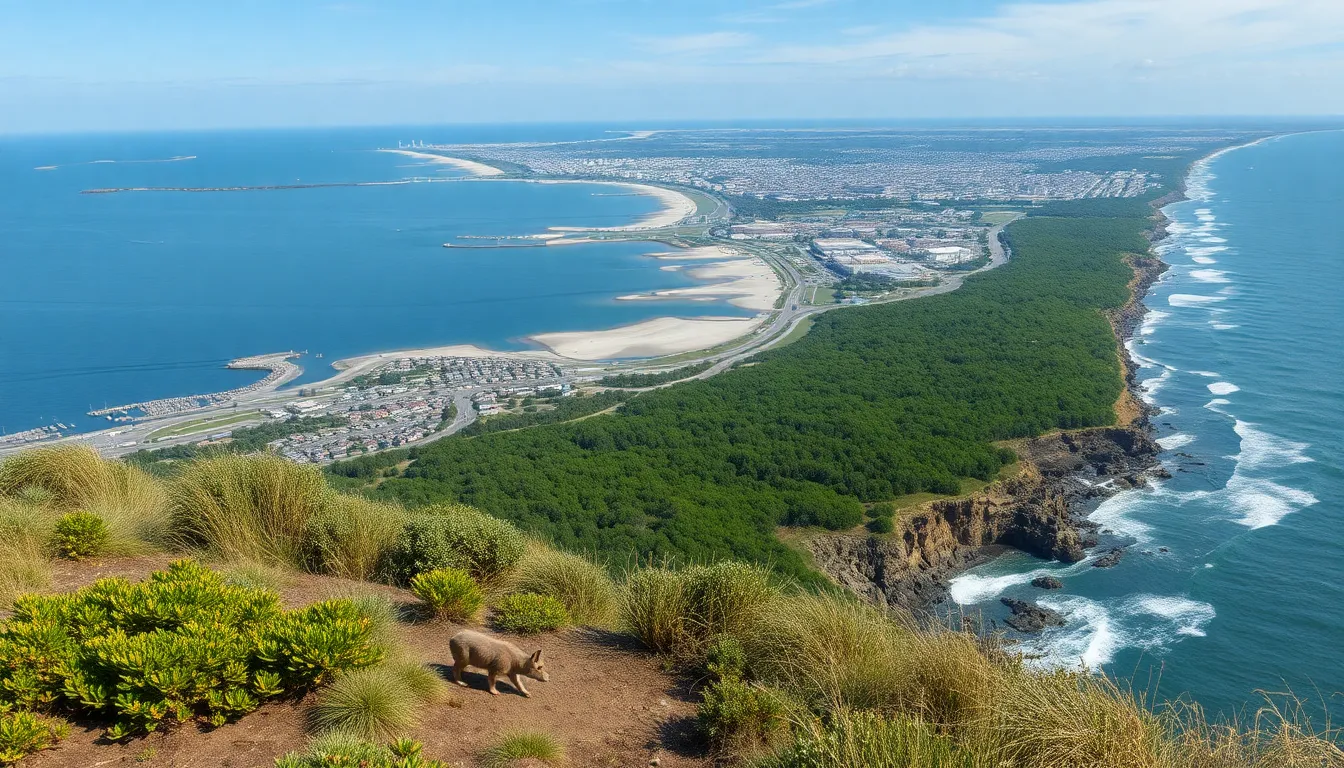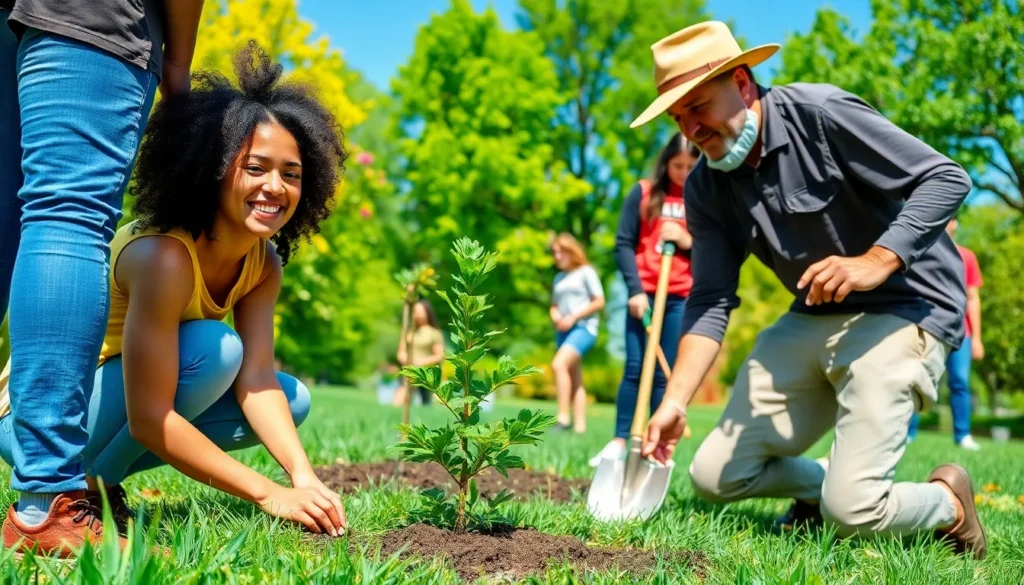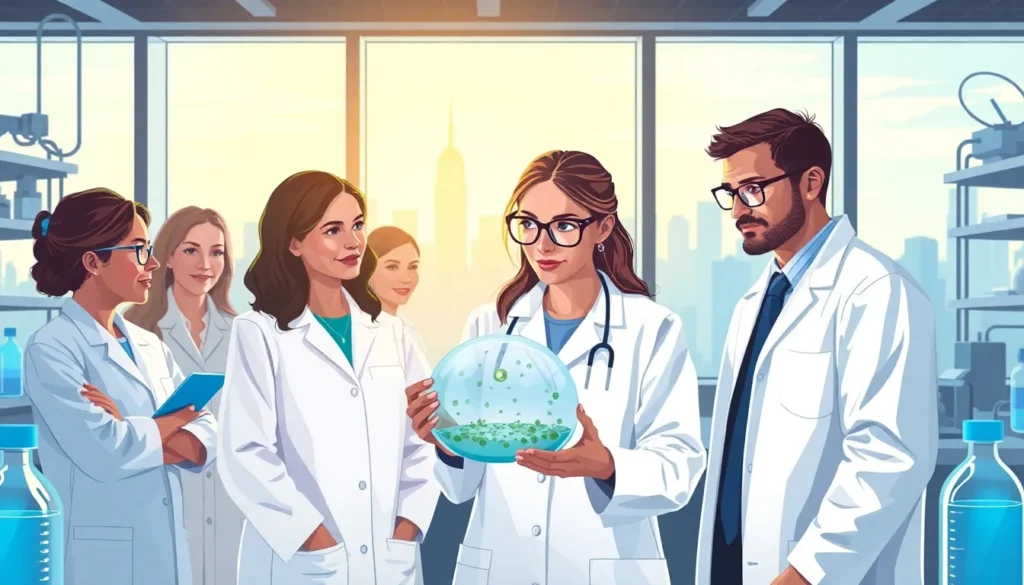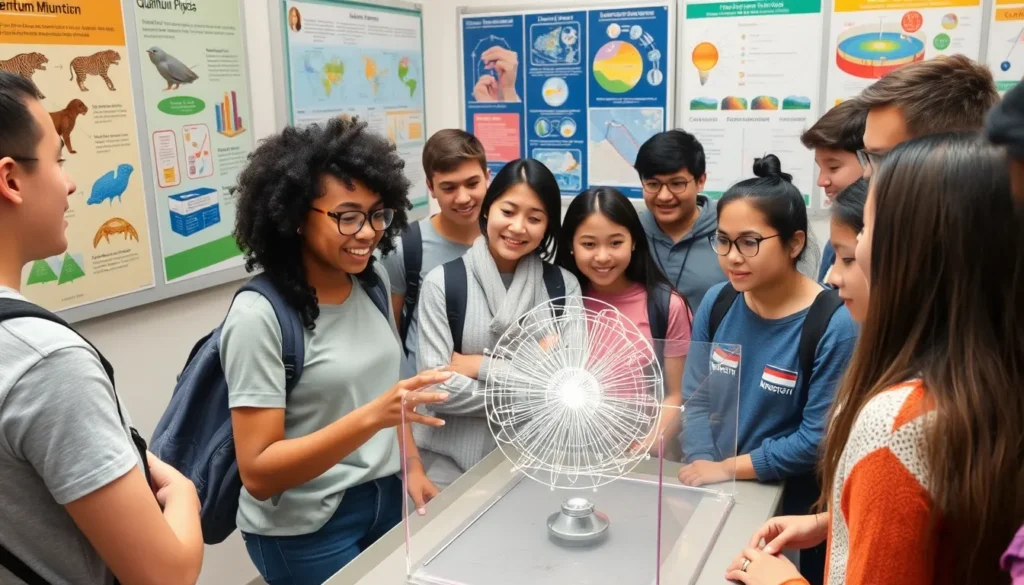In a world where nature often feels like a background character in humanity’s blockbuster movie, it’s time to give it the spotlight it deserves. Today’s nature isn’t just a pretty postcard; it’s a vibrant, complex web of life that’s as dramatic as any soap opera. From the majestic mountains to the tiniest insects, every element plays a crucial role in this grand performance.
But let’s face it—nature can be a bit of a diva. Climate change, pollution, and habitat loss are just a few of the plot twists threatening its survival. Yet, amidst the chaos, there’s hope. People are stepping up, making changes, and finding innovative ways to coexist with the natural world. Join the adventure as we explore the highs and lows of nature today, and discover how everyone can play a part in this ever-evolving story.
Nature World Today
Nature serves as a vital component of life, constantly evolving and providing essential resources. Climate change presents a significant challenge, impacting ecosystems worldwide. Habitat loss, driven by urban expansion and agriculture, threatens countless species. Pollution, particularly plastic waste, contaminates oceans and waterways, harming aquatic life.
Biodiversity remains crucial for ecosystem stability. Over 1 million species face extinction, according to the United Nations, highlighting an urgent need for conservation efforts. Restoration projects, such as reforestation and wetland recovery, aim to revitalize damaged habitats. Renewable energy sources, such as wind and solar, reduce reliance on fossil fuels and lower greenhouse gas emissions.
Community engagement plays a pivotal role in promoting sustainability. Local conservation initiatives encourage individuals to take actionable steps, from reducing waste to participating in tree-planting events. Educational programs raise awareness about ecological issues, fostering a generation that values nature.
Positive trends indicate a growing global movement towards environmental accountability. Many corporations adopt sustainable practices, aiming for carbon neutrality. International agreements, like the Paris Agreement, unite countries in the fight against climate change, showcasing global commitment.
Innovative technologies, including artificial intelligence and remote sensing, enhance conservation efforts by monitoring wildlife populations and tracking environmental changes. Scientists continually explore ways to mitigate climate impact while promoting ecological balance. Together, these collective actions and commitments signal a hopeful shift toward preserving nature for future generations.
Current Environmental Challenges

The environment faces significant challenges that threaten ecosystems and human well-being. Climate change and biodiversity loss represent two critical issues requiring immediate attention.
Climate Change Impacts
Climate change alters weather patterns, leading to more extreme events like hurricanes and droughts. Ecosystems struggle to adapt to rising temperatures and shifting precipitation patterns. Sea levels are rising due to melting polar ice, impacting coastal communities and habitats. Agriculture suffers as crops become more vulnerable to changing conditions, risking food security for millions. According to data from the Intergovernmental Panel on Climate Change (IPCC), global temperatures have increased by about 1.1 degrees Celsius since the late 19th century. This increase correlates with higher greenhouse gas emissions from human activities. Addressing these challenges involves transitioning to renewable energy sources, increasing energy efficiency, and reducing overall carbon footprints.
Biodiversity Loss
Biodiversity remains essential for ecosystem stability and resilience. Over 1 million species currently face extinction, primarily due to habitat loss, pollution, and climate change. Habitat destruction occurs as urban development expands and agricultural practices intensify. Polluted environments degrade the health of species, compromising their survival. The World Wildlife Fund reports that wildlife populations have declined by an average of 68% since 1970. Conservation efforts are crucial in reversing these trends. Initiatives like wildlife reserves and protected areas aim to preserve natural habitats. Engaging communities and raising awareness through education enhances the effectiveness of these programs. Safeguarding biodiversity requires collaborative global efforts that prioritize sustainable practices and habitat restoration.
Conservation Efforts
Conservation efforts play a pivotal role in addressing today’s environmental crises. Initiatives at both global and community levels seek to protect ecosystems and promote sustainable practices.
Global Initiatives
Global initiatives focus on uniting countries in the fight against environmental degradation. The Paris Agreement represents a significant commitment to reducing greenhouse gas emissions and limiting global temperature rise. Collaborative programs from organizations like the World Wildlife Fund and the United Nations Environment Programme (UNEP) emphasize biodiversity preservation and responsible resource management. Specific goals involve protecting at least 30% of the earth’s land and marine areas by 2030. Innovative funding mechanisms and partnerships enable nations to implement effective conservation strategies, promoting sustainable development while addressing climate change impacts.
Community Engagement
Community engagement enhances the effectiveness of conservation efforts. Local initiatives involve education programs and awareness campaigns that promote sustainable practices. Residents participate in habitat restoration projects and wildlife monitoring activities, fostering a sense of responsibility towards their environment. These grassroots movements often lead to impactful changes, as communities adapt practices like urban gardening and recycling. Empowering individuals creates a collective action that bolsters conservation objectives. Collaboration among local governments, non-profits, and citizens ensures that conservation efforts are culturally relevant and tailored to specific environmental challenges, maximizing their overall impact.
Innovations in Sustainability
Innovations in sustainability play a crucial role in addressing the challenges faced by nature today. Numerous advancements in technology and eco-friendly practices are emerging to combat climate change and promote biodiversity.
Technology Solutions
Innovative technologies contribute significantly to sustainability efforts. Solar energy systems enable communities to harness renewable resources effectively. Wind turbines provide clean energy, reducing reliance on fossil fuels. Smart agriculture utilizes data analytics and IoT devices to optimize resource usage and minimize waste. Electric vehicles reduce carbon emissions, revolutionizing transportation. According to the International Energy Agency, the number of electric vehicles on the road reached 10 million in 2020, marking a substantial increase. These technologies not only mitigate environmental impact but also pave the way for a more sustainable future.
Eco-Friendly Practices
Eco-friendly practices enhance sustainability at both individual and collective levels. Sustainable agriculture focuses on crop rotation and reduced chemical use, promoting healthier soils and ecosystems. Zero-waste initiatives encourage consumers to minimize waste through recycling and composting. Plant-based diets reduce demand for resource-intensive animal products, benefiting the environment. According to a study published in Nature, shifting to plant-based diets can lower greenhouse gas emissions from food production by up to 70%. Community gardens foster local food production and strengthen community ties. Adopting these practices empowers individuals and organizations to contribute positively to environmental preservation.
Future Outlook for Nature World Today
Future projections show that if current trends in climate change and habitat loss continue, ecosystems may undergo significant transformation. Altered rainfall patterns and temperature fluctuations can lead to shifts in species distribution, affecting global biodiversity. Over 1 million species remain at risk of extinction, emphasizing the urgent need for effective conservation strategies.
Innovative technologies promise to change the landscape of environmental protection. Solar energy systems, wind turbines, and electric vehicles aim to reduce reliance on fossil fuels. Smart agriculture techniques enhance crop yields while minimizing ecological footprints. Such advancements suggest a pathway to sustainable development that supports both human needs and environmental health.
Community engagement plays a critical role in fostering recovery and sustainability. Local conservation projects and grassroots movements promote awareness about environmental issues. Participation in activities like tree planting and wildlife protection strengthens community ties and enhances local ecosystems.
Collaboration across various sectors can amplify efforts to combat climate change. Partnerships between governments, non-profits, and businesses drive initiatives that support both local and global sustainability goals. The Paris Agreement, for instance, demonstrates how countries can unite to tackle climate challenges collectively.
Positive change emerges from individuals making environmentally conscious decisions. Choices regarding waste reduction, responsible consumption, and plant-based diets contribute to lower carbon footprints. Each person’s action reinforces the message that everyone can play a role in preserving nature.
Looking ahead, the interplay of technology, community action, and global collaboration will shape the future of nature. Sustainable practices and collective mindfulness offer hope for coming generations while underscoring the importance of maintaining a harmonious relationship with the natural world.
Conclusion
Nature’s resilience and beauty continue to inspire hope despite the challenges it faces. The collective efforts of individuals, communities, and organizations highlight the power of collaboration in addressing environmental issues. As technology advances and sustainable practices gain traction, there’s potential for significant positive change.
Every action taken towards conservation and sustainability contributes to a larger movement aimed at preserving the planet. By fostering a deeper connection with nature and making informed choices, everyone can play a role in shaping a healthier environment. The journey toward a balanced coexistence with nature is ongoing, and each step taken today paves the way for a brighter future.



